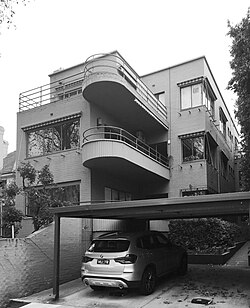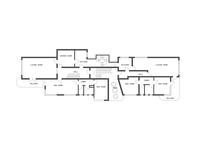
Robin Gerard Penleigh Boyd was an Australian architect, writer, teacher and social commentator. He, along with Harry Seidler, stands as one of the foremost proponents for the International Modern Movement in Australian architecture. Boyd is the author of the influential book The Australian Ugliness (1960), a critique on Australian architecture, particularly the state of Australian suburbia and its lack of a uniform architectural goal.
Sir Roy Burman Grounds was an Australian architect. His early work included buildings influenced by the Moderne movement of the 1930s, and his later buildings of the 1950s and 1960s, such as the National Gallery of Victoria and the adjacent Victorian Arts Centre, cemented his legacy as a leader in Australian architecture.

Dr Norman Kingwell Day is an architect, educator, and writer.
Philip J. Goad is an Australian academic, currently serving as Professor of Architecture in the Faculty of Architecture, Building and Planning at the University of Melbourne. He is also a former President of the Victorian Chapter of the Royal Australian Institute of Architects. Phillip became Chair of the Heritage Council of Victoria in July 2021.
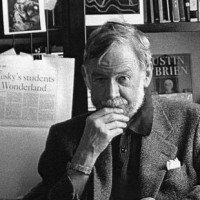
Peter Russell Corrigan was an Australian architect and was involved in the completion of works in stage and set design.
Neil Clerehan was an Australian architect and architectural writer.
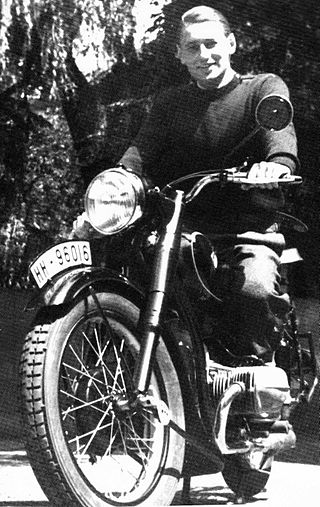
Frederick Romberg,, , was a Swiss-trained architect who migrated to Australia in 1938, and became a leading figure in the development of Modernism in his adopted city.
Chancellor and Patrick was a Melbourne based architecture firm, formed in 1953 and dissolved in 1981, is best known for their numerous houses from the mid 1950s to the mid 1960s, designed in their signature dynamic, expressive take on 'organic' architecture.

RMIT Building 8 is an educational building, part of RMIT University's City campus in Melbourne, Victoria. It is located at 383 Swanston Street, on the northern edge of Melbourne's central business district.

The Brunswick Fire Station and Flats, located at 24 Blyth Street, Brunswick, Victoria, Australia, was constructed in 1937–1938. Designed by Seabrook and Fildes, it was the first fire station commissioned by the Melbourne Metropolitan Fire Brigade to embrace a Modernist ideology.

House at Caulfield, is a family home situated at 450 Dandenong Road in Caulfield North, Melbourne, Victoria, Australia, designed by Anatol Kagan in 1956 for Polish-Jewish emigre Leo Lind and his wife Dorothy. Born in Russian on October 4, 1913 Anatol Kagan's career as an architect spanned over seven decades until his death on July 2, 2009. He was actively involved in the field of design, as well as a writer, translator, lecturer and political activist. The house is an important work of its period demonstrating the Modernist architectural movement of Melbourne during the mid 20th Century, and in 2018 was added to the Victorian Heritage Register. Kagan was also influenced by the works of his local contemporaries, Roy Grounds, Frederick Romberg and Robin Boyd.

The MacFarland Library at Ormond College, the University of Melbourne, completed in 1965, was Frederick Romberg’s second building for Ormond College. The initial scheme for the building in 1962 was a largely classical building that drew on elements from many of Romberg’s buildings from the previous decade. The subsequent revised scheme better complemented the rest of Reed and Barnes’ Gothic Revival Ormond college. The central plan of the library is a tribute to long tradition of library building including the Melbourne Public Library’s domed reading room, which involved Joseph Reed, Selwyn Bates, Norman Peebles and Charles Smart.

Newburn Flats is an apartment building located at 30 Queens Road, Melbourne. It is considered one of the first examples of European Modernist ideals applied to multi-unit residences in Australia. It was designed by the firm Romberg & Shaw in 1939 and completed in 1941.

Dr Ernest Fooks was an influential European-trained architect who made a significant contribution to architecture, town planning, and design education in Australia and to the cultural life of Melbourne after emigrating to the city just before the Second World War.
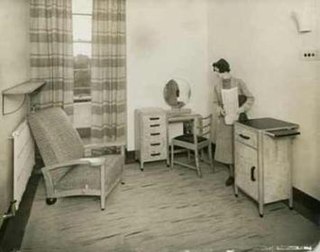
Mary Turner Shaw (1906–1990) was born in Caulfield, Melbourne, Australia. She is one of the first women to be employed as an architect in the early 1930s in Australia and thus pioneered new pathways for female architects. Her career is widely known for her working qualities that made her oversee many projects across Australia. She also became a distinct figure as an architectural historian, when she started publishing books and written articles. Her skills were diverse as she worked as a fashion designer, interior designer, project manager, public works architect and pioneer architectural librarian. As historian Geoffrey Serle described her, she was "a born writer and research historian with imagination, the ability to tell a story and define and ask fundamental questions".
Acheson Best Overend was an Australian architect. He is best known for the Cairo Flats in Fitzroy, built 1935-6, a daringly Modernist design for Melbourne in the 1930s.
Arthur Baldwinson (1908–1969) was one of Australia's first generation of prominent modernist architects to experience the European modernist movement first hand. His modernist contemporaries include Roy Grounds and Frederick Romberg in Victoria, as well as Sydney Ancher and Walter Bunning in New South Wales; their respective Australian architectural careers in modernism began in the late 1930s. Baldwinson's active professional career as an active practising architect was relatively short (1938–1960).
Originally known as Stephenson and Meldrum (1921–1937), Stephenson and Turner (1938–1995) was a prominent Australian architectural firm, best known for the pioneering modernism of their numerous hospital designs of the 1930s and 1940s.
Harriet Edquist is an Australian curator, and Professor of Architectural History in the School of Architecture and Design at RMIT University in Melbourne. Born and educated in Melbourne, she has both published widely on and created numerous exhibitions in the field of Australian architecture, art and design history. She also contributes to the production of Australian architectural knowledge as editor of the RMIT Design Archives Journal and is a member of the Design Research Institute at RMIT University.

The Second Townsville General Hospital is a heritage-listed former hospital and now an apartment building at 24 Eyre Street, North Ward, Townsville, City of Townsville, Queensland, Australia. It was designed by Donoghue & Fulton and built from 1945 to 1951. It is also known as North Ward Hospital. It was added to the Queensland Heritage Register on 26 April 1996.
